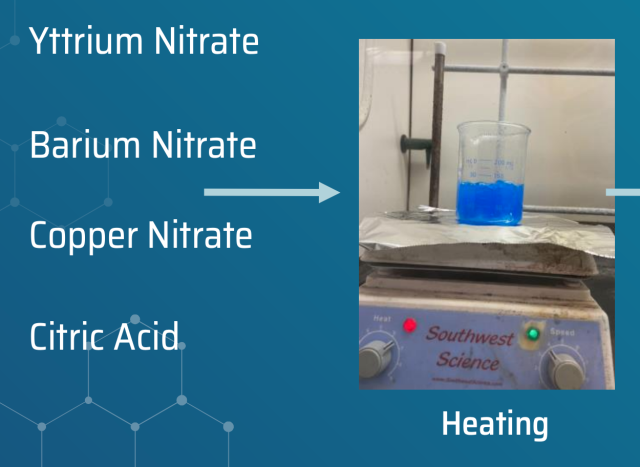Mentor
Juan Chamorro - Wilson Lab, Materials Department
Advisor
Stephen D. Wilson - Wilson Lab, Materials Department
Cryogenic Cooling of YBCO Creates Superconductivity
Interns
Jennifer Pacheco - Chemical Engineering
Paulina Jimenez - Chemical Engineering
Jason Perez - Mathematics

Project Description
Superconductors are fascinating materials used in technologies ranging from MRIs to Maglev trains to particle colliders. Beneath a materials-specific critical temperature, a superconductor exhibits two observable properties that are borne entirely of quantum mechanics: perfect electrical conductivity and perfect magnetic repulsion. Superconductors could be used someday to create perfectly efficient energy grids with zero loss to heat, and could push humanity into a quantum age.Unfortunately (there’s always a catch), the critical temperature under which superconductivity occurs in materials tends to be low –most commercially used superconductors require liquid helium (~4 K) to operate. A major goal in materials science and physics is the discovery of a superconductor that can operate at room temperature and under ambient conditions. While this has not been achieved yet, in 1986, the cuprate superconductors with record-breaking critical temperatures were discovered. Some of these copper-containing materials can superconduct even up to temperatures above the boiling point of liquid nitrogen, allowing us to observe their quantum properties with our own eyes. This project will be great for students interested in materials science, physics, and chemistry. We will prepare some YBCO (YBa2Cu3O7-x) together in the lab using wet chemistry techniques, then hot press it into a pellet and demonstrate the quantum levitation (Meissner) effect with magnets and liquid nitrogen.
Project Files
